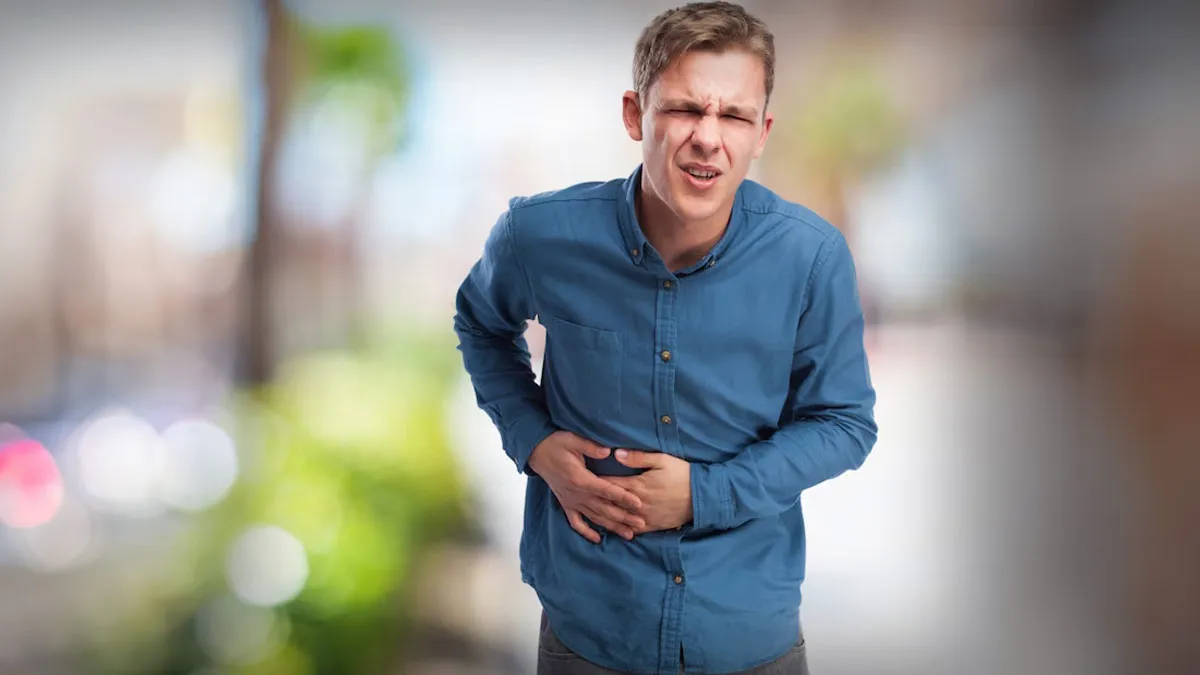
Have you ever felt a sudden, sharp pain in your stomach and wondered if it's something to be concerned about? Abdominal pain can be unsettling, especially when you're unsure of the cause. Gallstones and kidney stones are two common culprits that can lead to significant discomfort, but they have distinct symptoms and require different treatments. Understanding how to tell them apart can help you seek the right care. To guide us through this, we spoke to Dr Nadendla Hazarathaiah, Consultant, Surgical Gastroenterologist, GI Oncologist, Minimal Access Surgeon, Gleneagles Hospital, Hyderabad, who shared insights on how to differentiate between the two and manage them effectively.
Table of Content:-
Gallstones: Essential Characteristics

“Gallstones are solid deposits that develop in the gallbladder, a small organ beneath the liver that helps with digestion by storing bile. These stones can vary in size from small grains to larger, pebble-like formations,” said Dr Hazarathaiah. According to a 2020 study, gallbladder stones impact 10-15% of adults in Western countries. In India, their prevalence varies significantly across communities, with North Indians showing a 2 to 4-fold higher rate than South Indians.
Symptoms of Gallstones

Sharp Upper Abdominal Pain: Pain typically occurs in the upper right abdomen and can radiate to the back or right shoulder.
Pain After Meals: Fatty meals often trigger gallstone-related pain, which may last anywhere from a few minutes to several hours.
Digestive Discomfort: Symptoms like nausea, vomiting, and bloating often accompany the pain.
Risk Factors for Gallstones
Gallstones are more likely to occur in:
Women over the age of 40
Individuals with obesity
People with diabetes or liver disease
Those who follow diets high in fat and cholesterol
Also Read: Can Gallstones Clear Up Without Surgery? Early Signs To Note
Kidney Stones: Distinctive Features

"Kidney stones are hard deposits made up of minerals and salts that form within the kidneys. These stones can travel through the urinary tract, causing intense pain and discomfort as they move," added Dr Hazarathaiah. According to a 2024 study, kidney stones impact 1-15% of people worldwide. The recurrence rate is high, with about 50% of patients experiencing another episode within 10 years.
Symptoms of Kidney Stones

Severe Cramping Pain: Pain often begins in the back or side and may radiate to the lower abdomen or groin as the stone moves.
Intermittent Pain: The intensity of pain fluctuates depending on the stone's movement within the urinary tract.
Urinary Changes: Symptoms may include blood in the urine, cloudy or foul-smelling urine, and frequent, painful urination.
Risk Factors for Kidney Stones
Men are at a higher risk of developing kidney stones, particularly those with:
A history of dehydration
Diets high in sodium
Genetic predisposition to stone formation
Critical Differences Between Gallstones and Kidney Stones
Though both conditions cause abdominal pain, several distinguishing factors can help identify the cause. Here are some listed by Dr Hazarathaiah:
Pain Location
Gallstones: The pain is focused in the upper right abdomen and may spread to the back or shoulder.
Kidney Stones: Pain is typically felt in the back, side, or lower abdomen and can move toward the groin.
Pain Triggers
Gallstones: Symptoms are often triggered by consuming fatty meals.
Kidney Stones: Pain occurs independently of meals and is associated with the movement of stones through the urinary tract.
Associated Symptoms
Gallstones: Symptoms primarily affect digestion, such as bloating, nausea, and vomiting.
Kidney Stones: Symptoms involve urinary changes, such as blood in the urine or painful urination.
Also Read: Are You Prone To Kidney Stones? Expert Advises To Avoid These Foods
Medical Intervention Timing
Recognising when to seek medical care is crucial for both conditions:

Gallstones: Seek medical attention if pain persists for several hours or is accompanied by fever, jaundice, or chills, as these may indicate a gallbladder infection or bile duct obstruction.
Kidney Stones: Immediate medical care is necessary for severe pain, blood in the urine, fever, or signs of infection.
Diagnosis and Treatment Protocols
-1735803860112.jpg)
Gallstones
Doctors usually diagnose gallstones through imaging techniques like ultrasounds or CT scans. Treatment options include:
Dietary Modifications: Cutting back on fat intake can help alleviate symptoms.
Medications: In certain cases, medications can help dissolve smaller gallstones.
Surgical Removal: A cholecystectomy, or gallbladder removal surgery, is often recommended for recurring or severe cases.
Kidney Stones
Kidney stones are diagnosed through imaging techniques like CT scans, ultrasounds, or X-rays. The treatment plan depends on the size and location of the stone.:
Natural Passage: Smaller stones can pass on their own with increased hydration and pain management.
Lithotripsy: Shock wave therapy can break larger stones into smaller pieces for easier passage.
Surgical Intervention: For particularly large or obstructive stones, surgical removal may be necessary.
Prevention Strategies
Preventing these conditions involves lifestyle modifications. Follow these tips listed by the expert:
Gallstones
Maintain a healthy weight.
Follow a balanced diet with controlled fat intake.
Kidney Stones
Stay hydrated by drinking plenty of water daily.
Limit sodium and include appropriate amounts of dietary calcium.
Bottomline
Dr Hazarathaiah concluded, “Understanding the key differences between gallstones and kidney stones can help you identify symptoms and seek timely medical care. Persistent or severe abdominal pain should always be evaluated by a healthcare professional to ensure proper care and management.”
[Disclaimer: This article contains information provided by an expert and is for informational purposes only. Hence, we advise you to consult your professional if you are dealing with any health issues to avoid complications.]
Also watch this video
How we keep this article up to date:
We work with experts and keep a close eye on the latest in health and wellness. Whenever there is a new research or helpful information, we update our articles with accurate and useful advice.
Current Version